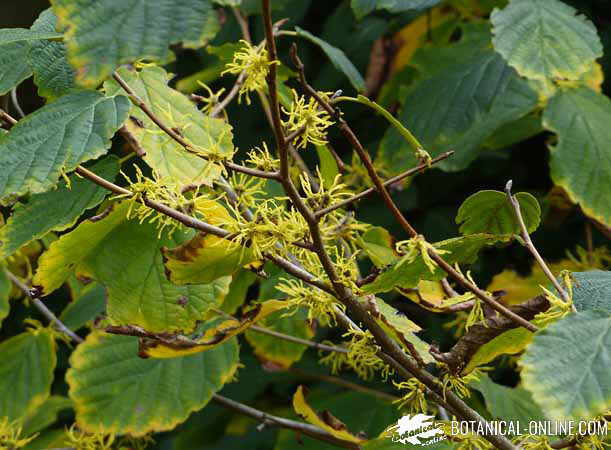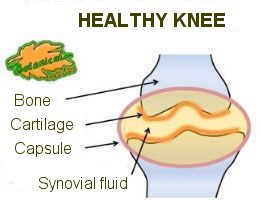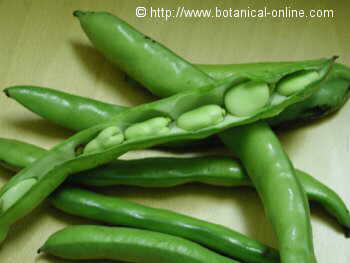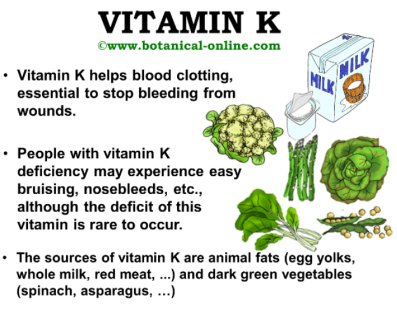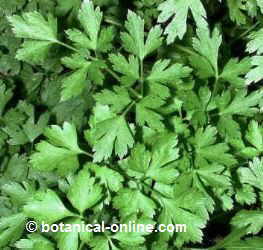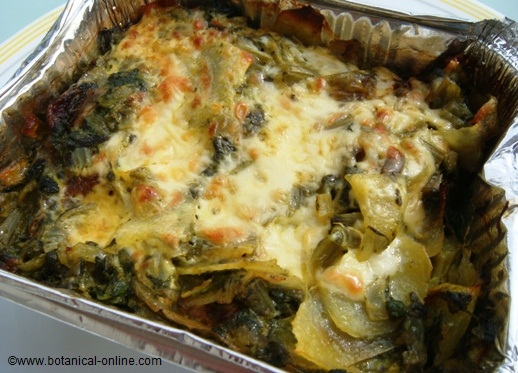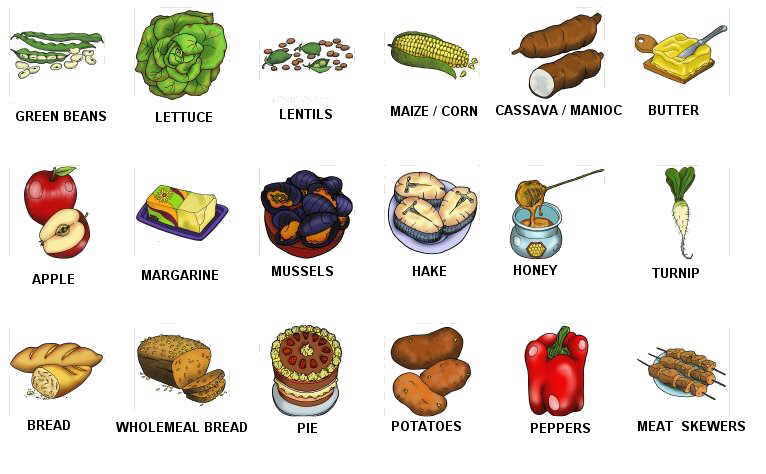Contents
- 1 Pigweed nutritional benefits as an edible wild plant
- 1.1 Pigweed nutritional properties (Chenopodium album)
- 1.2 What part of pigweed is consumed?
- 1.3 Nutritional value of pigweed
- 1.4 What vitamins and minerals does pigweed have?
- 1.5 Tips for eating pigweeds
- 1.6 Pigweeds against food globalization
- 1.7 How are pigweeds consumed?
- 1.8 Edible properties of the seeds of pigweeds
- 1.9 Nutritional composition of pigweeds
Pigweed nutritional benefits as an edible wild plant
Pigweed nutritional properties (Chenopodium album)
Pigweed is a plant that for many years has been consumed as a common vegetable, although, over time, other more productive plants, as well known as lettuce or Swiss chard, have displaced it from the diet.
Currently, this plant continues to be consumed in many rural regions, as an edible wild plant.
What part of pigweed is consumed?

Pigweed is an abundant plant in nature, which spreads a lot and with which we can save many trips to the market.
As such, the tender leaves of the plant are harvested during the spring, when it begins to sprout, and before it produces its inflorescences. That is, only the 4 or 6 upper leaves of the stem, since the leaves of the base are more bitter, rich in oxalates and woody. The stems, even being tender, make threads and are not pleasant to chew.
It is a very prolific plant, so if one wants a good ration, it will be easy to collect a considerable bunch.
Nutritional value of pigweed
Nutritionally, Chenopodium album consists mainly of:
- Water (84%),
- A small amount of carbohydrates (3%)
- It is very rich in fiber (3%)
- It has a certain amount of protein (3%)
- It has practically no fats (lower 1%).
What stands out most of this plant is its content in vitamins and minerals: potassium, folic acid, vitamin C, chlorophyll, carotenes and other phytochemical compounds with health properties.
What vitamins and minerals does pigweed have?
Among its nutrients, pigweed provide us:
- With a lot of potassium, a mineral with diuretic properties, to stimulate the production of urine and therefore the elimination of waste from the body.
- Like other green leafy vegetables, pigweed also provides a large amount of folic acid, which purifies the blood of toxins such as homocysteine, being very useful to avoid high cholesterol, obesity, diabetes and heart disease.
- It provides powerful antioxidants, mainly beta carotene and chlorophyll.
- It is a good supply of calcium and magnesium.
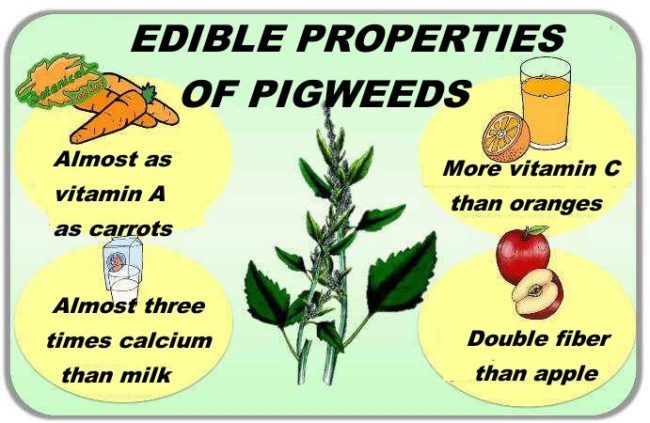
Tips for eating pigweeds
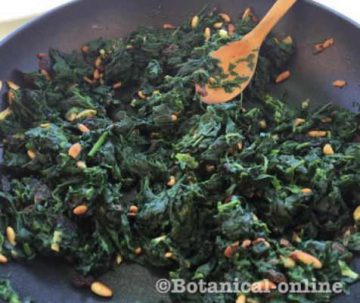
It is important to know that pigweeds, like other Chenopodiaceae such as Swiss chard or spinach, are very rich in oxalates, substances that prevent the assimilation of calcium, and can cause kidney stones (although only if there is a tendency to suffer from this problem). ).
To avoid this small inconvenience and enjoy this delicious herb, you can boil the leaves of pigweeds to eliminate the oxalates (the oxalates remain in the cooking broth). Another system would combine this vegetable with calcium-rich foods to compensate for their oxalate content.
* More information: How to remove oxalates
Pigweeds against food globalization
Pigweed and other wild plants that are now known as wild edibles have been part of traditional cuisine since antiquity, and it could be said that their consumption goes back to the origin of man.
Reintroducing the consumption of pigweeds or quinhuillas and other wild plants in the kitchen is to recover a vestige of gastronomic history, close to getting lost and being buried by food globalization.
* See: History of the consumption of wild plants
How are pigweeds consumed?
This plant is a highly appreciated vegetable throughout the Mediterranean region, especially in rural areas, where it is still consumed.
The leaves are eaten raw (only the tiniest and tiniest leaves), or rather boiled or cooked, in different stews, or basically in vegetable dishes, in any stew of vegetables or rice, and to make tortillas.
They can also be used to fill cannelloni, fresh pasta, quiches, to prepare empanadas and for crêpes.
Edible properties of the seeds of pigweeds
It is confirmed that the seeds of the plant had been used in times of famine also as food, mixed with rye flour, similar to the way in which Quinoa or Inca wheat (Chenopodium quinoa L.) was formerly consumed in South America, before its colonization.
Nutritional composition of pigweeds
| Main components of pigweedsper 100 g. | |
| Water | 84,3 g. |
| Calories | 43 Kcal |
| Fat | 0,8 g |
| Protein | 4,2 g |
| Carbohydrates | 7,3 g |
| Fiber | 4 g |
| Potassium | 452 mg. |
| Sodium | 43 mg. |
| Phosphorus | 72 mg. |
| Calcium | 309 mg. |
| Magnesium | 34 mg. |
| Iron | 1,2 mg. |
| Zinc | 0,44 mg. |
| Vitamin C | 80 mg. |
| Vitamin B1 (Thiamin) | 0,16 mg. |
| Vitamin B2 (Riboflavin) | 0,44 mg. |
| Vitamin B6 (Pyridoxine) | 0,274 mg. |
| Vitamin A | 11.600 IU. |
| Vitamin E | 0,63 mg. |
| Folate (vit. B9) | 30 mcg. |
| Vitamin B3 (Niacin) | 29 mg. |
![]() More information on pigweed
More information on pigweed


